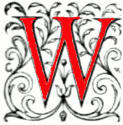
illiam James Webb(e) was born on 13 July 1830 at Redruth, Cornwall, one of eight children of the Reverend Samuel Webb, a Wesleyan minister, and his wife Sarah, née Stirrup, whose family were pottery manufacturers. He received his artistic training in Dusseldorf under Wilhelm Schadow where he was influenced by the Nazarenes. Webb was evidently back in England by 1853 because he exhibited his first picture at the Royal Academy that year. He was then living in Hemel Hempstead, but by 1855 he had moved to Niton, on the southernmost tip of the Isle of Wight. He stayed there until 1857 when he moved to London where he had a studio in Langham Chambers, an area in Portland Place where many Pre-Raphaelite artists had studios. Webb exhibited at the Royal Academy from 1853-1878, and also exhibited at the British Institution (1855-64) and the Society of British Artists (1853-70). He also exhibited at provincial centres like Manchester. His patron C. Lucas showed two of his pictures at the International Exhibition at South Kensington in 1862.
He first travelled to Jerusalem and Palestine in 1862 and is today is perhaps best known for his orientalist subjects. It is unknown whether he made more than the one trip to the Holy Land. He first exhibited an Eastern subject at the Royal Academy in 1863 and exhibited about twelve such Orientalist subjects over the next eight years at various institutions. Webb also painted rustic genre, religious, allegorical, animal/birds, and fairy subjects. Webb married his wife Besse sometime before 1871. She was eighteen years younger and the couple had two children, a daughter Ethel Alice and a son Wilfred Mark. By 1901 he and his wife were living at 4 Marlborough Rd, Ealing, Middlesex.
Although it has been claimed he died in 1904, the 1911 census has him living at Heimath, 26 Clifton Road, Wallington, Surrey and aged 80. The date of Webb's death therefore remains a mystery.
According to Jennie Shelley, his great great grandniece, he went by the name of William J. Webbe for his paintings, but used the name of W. J. Webb when he illustrated books. This appears be an oversimplification, however. His paintings are often signed W. J. Webb and he is listed as an exhibitor in Royal Academy catalogues as William J. Webb. In British Institution and Society of British Artist catalogues, however, he is listed as William J. Webbe. On the other hand, his book illustrations do appear to be signed W. J. Webb.
About his book illustration, and particularly his contribution to his son's work as a writer, Shelley writes, "I have many books that he illustrated, such as Bible stories for children and poetry books. William's son Wilfred Mark Webb OBE wrote books on nature study, which his father illustrated. Wilfred wrote Heritage of Dress and 2 volumes of Eton Nature Study (text books for Eton College). William's illustrations of insects etc in the text books are in very great detail." She adds,
I have found some of William's pictures on the internet. There are 5 in the Bridgeman Art Library and 1 on the Christopher Wood Gallery site. Also on many poster sites his picture The Collared Thief can be found. Art.com lists many of his paintings that have come up for auction. I found a list of some his paintings in a book at the library in The Royal Academy Exhibitors. He must have done over 30 painting in his lifetime. Somewhere in N.Z. there is an original painting done by William J. Webbe of 2 of my relatives. The painting has been damaged in a fire but myself and many of my relatives have copies of it. [qtd. in the Webb Family Genealogy, p.217]
Bibliography
Brooke, Anthea. Victorian Painting. Catalogue for exhibition November-December 1977. London: Fine Art Society, 1977.
Spring '99. London: The Fine Art Society, 1999.
Webb Family Genealogy 216-18 https://kaihuvalleyhistory.com/wp-content/uploads/2015/12/webb-family-master-file-final.pdf. Web. 30 May 2025.
Created 11 April 2005
Last modified 30 May 2025